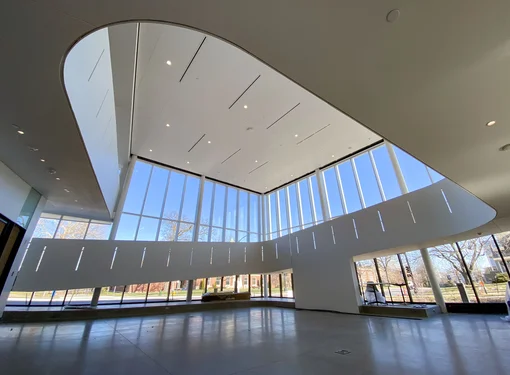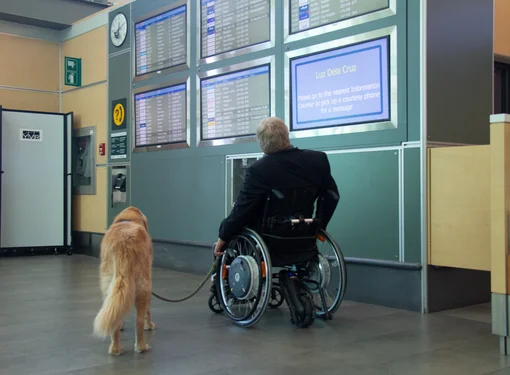Accessible Voting in Municipal Elections Fall 2022
Some provinces are holding their municipal elections this fall, sending many Canadians to the polls. While Canadians gear up to choose their elected officials, for many, getting to the polls and voting isn’t as easy as showing up at the designated polling place.
24% of Canadians identify as having a disability, and many more live with accessibility challenges. Every Canadian deserves to be represented in elections, and to do so, accessibility needs to be included from the start. Below we discuss some of the ways that those who identify as having a physical disability impacting their vision, hearing and/or mobility can vote in the upcoming elections.
Ontario
Mobility Disabilities
If for any reason your polling place is not accessible, Elections Ontario provides curbside voting, where the ballot is brought outside the voting location by an official.
You may also have your ballot transferred to a more accessible voting location. Prior to election day, voters can make the request at a returning office, the local election office in your area.
Election officials will be visiting participating hospitals in an effort to give those who are hospitalized an opportunity to vote. According to Elections Ontario, “you will need to show one piece of ID and complete the application form before receiving your ballot. You can use your hospital bracelet as proof of name and address.”
Hearing & Vision Disabilities
Elections Ontario allows all voters to bring a support person with them. This person can assist the voter with “communication, mobility, personal care for medical needs and/or accessing goods, services or facilities.”
The City of Toronto also has a few more language services including voting place staff with nametags that specify if they speak another language, and you can call 311 for over the phone interpretation. The City also provides “How to Vote booklets in multiple languages, English, Braille and large font available at polling places.”
Elections Ontario also offers American Sign Language (ASL) and Langues des Signes Québécoise (LSQ) Interpreters. These interpreters are booked by the voter and billed to Elections Ontario.
Some other accessibility measures in place include use of mobile phones or devices voters use as an accessibility tool, and presence of magnifiers and ballot templates with braille numbering for use.
Vote From Home
Elections Ontario also allows you to vote from home if you are unable to go to a polling place. After requesting this option from Elections Ontario, “two election officials will bring a voting kit to your home to assist you in voting. You will need to show one piece of ID and complete the application form before receiving your ballot.”
Assistive Voting Technology
Many municipalities are using assistive voting technology. Elections Ontario says assistive voting technology “lets voters listen to their ballot choices and cast their ballot secretly and independently.”
There are a variety of ways for voters to control the machine. The controller has audio directions, and features large raised buttons, colour contrast and braille inscriptions; for those with limited mobility, it can be controlled with paddles that can be activated by different parts of the body; and sip and puff technology, which allows voters to mark their ballot by inhaling or exhaling into a straw.
British Columbia
Mobility Disabilities
Many municipalities and provinces are seeking to make polling stations accessible for those who use a mobility device. According to Elections B.C., “all advance voting places and most general voting places are wheelchair accessible.”
If there are no accessible polling stations in your area, another option is curbside voting. Most municipalities provide the option to have your ballot brought out to you at the curb or parking lot by an election official if you are unable to enter the polling station.
Vision & Hearing Disabilities
Municipalities have a variety of resources for those with a vision or hearing disability. Elections B.C. provides Braille candidate lists, large print ballot posters, and plastic ballot templates which are available at all voting places to help voters mark their ballots.
According to Elections B.C. “elections officials are trained to assist voters with hearing impairment and will have visual aids available at the voting place. Voters may also be accompanied by a sign language interpreter.” Voters in British Columbia can also call a 1-888-456-5448 to use voice to text services.
Accessible telephone voting Is available to those who are unable to vote independently in another capacity. According to Elections B.C. “this option may also be made available to some residents of care facilities, patients of acute care hospitals or deployed members of the military.”
Language Assistance
Elections B.C. allows voters to bring a translator with them. B.C. specifies that they will need to take an oath and confirm they are acting as a translator.
Assistive Voting Technology
The City of Vancouver will have assistive technology available at two polling stations to help electors mark their ballot. The machine can help voters mark their ballot with "sip-and-puff, paddle, or other accessibility devices; audio instructions and braille markings on paddles and buttons, and large print or high colour contrast," according to the City of Vancouver.
Use of this machine is available at Roundhouse Community Centre and Trout Lake Community Centre.
Manitoba
Mobility Disabilities
According to Elections Manitoba, if you are an individual who is unable to go in person to a polling place, you and your caregiver are able to participate in homebound voting. To do so you need to apply for a ballot in advance of election day.
If you are unable to enter the polling place for any reason, curbside voting is available, and an elections official will bring a ballot box out to you.
Vision Disabilities
Elections Manitoba provides “Braille ballot templates and a Braille list of candidates are available at all polling places.” Further, they provide magnifying rulers, and a list of candidates are available from the voting official.
Other Assistance
If you as a voter require language assistance at the polls, Elections Manitoba asks that you “contact Elections Manitoba before you plan to vote. [They] will do [their] best to accommodate the request and locate interpreters.”
For general assistance at the polling place, voters are able to bring someone along with them who is over 18 years of age. An elections officer at the polling place may also assist.
Prince Edward Island
In P.E.I. every polling station and polling booth is accessible to those who use a mobility aid.
Voters can also bring an individual with them to the polls if they are unable to mark a ballot on their own. According to Elections Prince Edward Island, “a deputy returning officer or friend may assist a voter in marking their ballot if the voter requests help. The voter will be asked to take an oath or make a special statement.”
Elections P.E.I. allows voters to bring a translator with them who can come into the polling booth alongside the voter to help them mark their ballot.
New Brunswick
Mobility Disabilities
In New Brunswick, all advance polls and returning offices are accessible. Elections New Brunswick allows for curbside voting if you are unable to access your polling place. Alternatively, you can vote in advance polls or by special ballot.
New Brunswick also allows use of assistance in the polling stations. An elector who is unable to mark their ballot may be assisted by elections officials, or a friend of the elector.
If you live in New Brunswick, you have the option of voting in-person at home for the upcoming election. According to the vote N.B. website, “electors who will be unable to attend the ordinary or advance polls due to the illness or incapacity of the elector, or due to the illness or incapacity of a person for whose care the elector is primarily responsible, may contact their returning office and request that special voting officers visit their home.”
Assistive Voting Technology
Like Ontario, New Brunswick has assistive technology that is called the audio vote solution.
“At all returning offices, we use a tabulation machine that allows electors to cast ballots using an audio session where the candidate names are read to the elector using headphones. Attached to this machine is a handheld Braille controller which is used to make the desired selections,” according to the Elections New Brunswick website. “In addition, the machine can be controlled with a sip and puff device, ideal for electors that already use a sip and puff device on a regular basis. The machine can also be controlled by paddles for individuals with limited mobility, which are activated by different parts of the body, such as hands, arms, legs, or feet.”
Other Assistance
A voter can also bring an interpreter with them if they choose to assist with marking the ballot. Voters can request a visual language interpreter when voting at a returning office in either ASL or LSQ.
--
These measures are a start, but there is more to be done to make voting as accessible as possible to Canadians of all ages and abilities. Provinces recommend that voters call to assure accessibility in their municipality, and for more information on what your municipality offers, you can refer to your respective election authority website. All Canadians should have the chance to have their voice heard.







